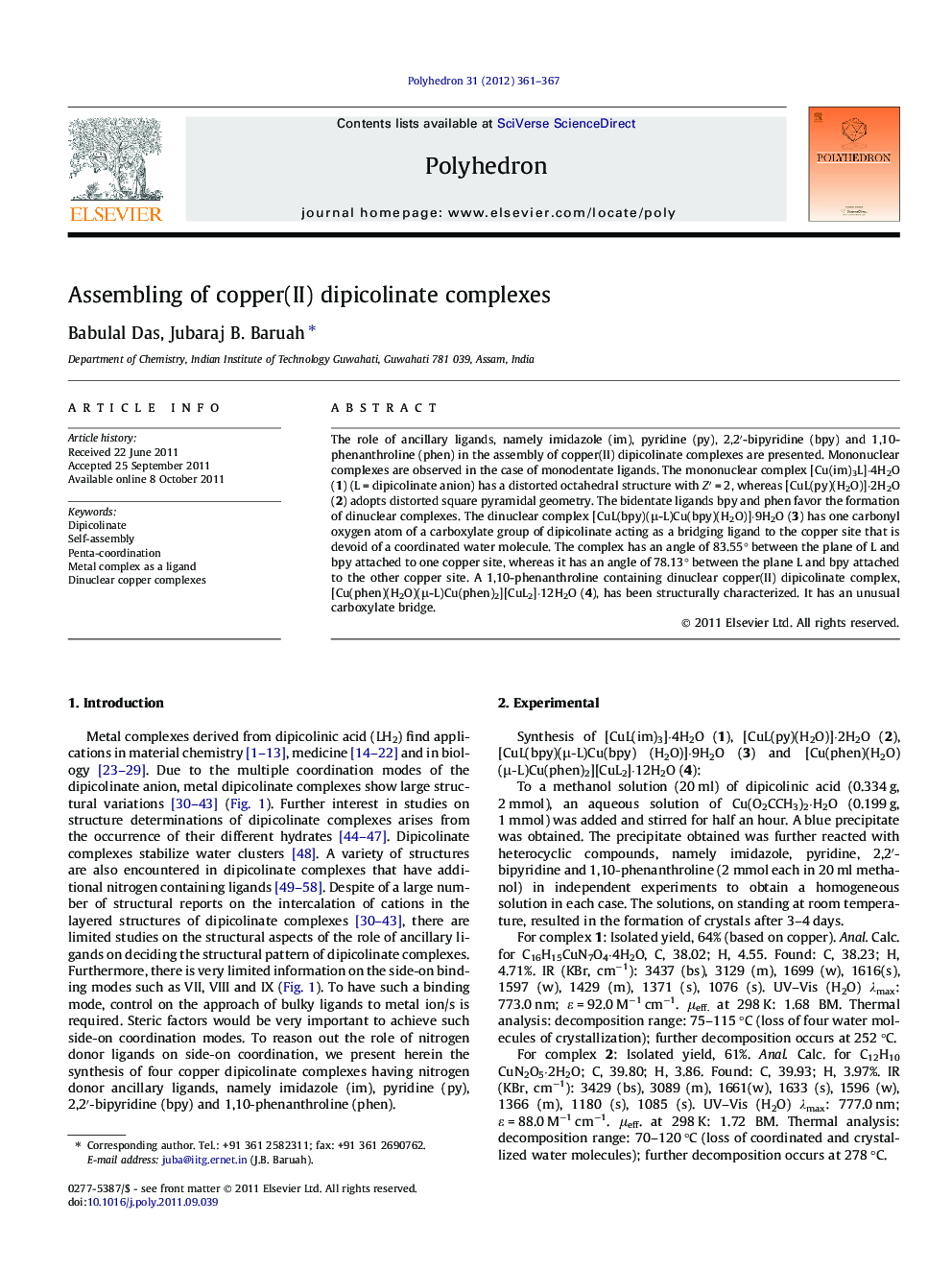| Article ID | Journal | Published Year | Pages | File Type |
|---|---|---|---|---|
| 1338198 | Polyhedron | 2012 | 7 Pages |
The role of ancillary ligands, namely imidazole (im), pyridine (py), 2,2′-bipyridine (bpy) and 1,10-phenanthroline (phen) in the assembly of copper(II) dipicolinate complexes are presented. Mononuclear complexes are observed in the case of monodentate ligands. The mononuclear complex [Cu(im)3L]·4H2O (1) (L = dipicolinate anion) has a distorted octahedral structure with Z′ = 2, whereas [CuL(py)(H2O)]·2H2O (2) adopts distorted square pyramidal geometry. The bidentate ligands bpy and phen favor the formation of dinuclear complexes. The dinuclear complex [CuL(bpy)(μ-L)Cu(bpy)(H2O)]·9H2O (3) has one carbonyl oxygen atom of a carboxylate group of dipicolinate acting as a bridging ligand to the copper site that is devoid of a coordinated water molecule. The complex has an angle of 83.55° between the plane of L and bpy attached to one copper site, whereas it has an angle of 78.13° between the plane L and bpy attached to the other copper site. A 1,10-phenanthroline containing dinuclear copper(II) dipicolinate complex, [Cu(phen)(H2O)(μ-L)Cu(phen)2][CuL2]·12H2O (4), has been structurally characterized. It has an unusual carboxylate bridge.
Graphical abstractThe roles of ancillary ligands in the assembly of copper(II) dipicolinate complexes are presented. Two mononuclear complexes [Cu(im)3L]·4H2O and [CuL(py)(H2O)]·2H2O (L = dipicolinate, im = imidazole, py = pyridine) are structurally characterized and their differences in coordination geometry are described. [CuL(bpy)(μ-L)Cu(bpy)(H2O)]·9H2O (bpy = 2,2′-bipyridine) is formed by the assembly of two neutral complexes, whereas [Cu(phen)(H2O)(μ-L)Cu(phen)2][CuL2]·12H2O (phen = 1,10-phenanthroline) has a neutral copper dipicolinate complex coordinated to a complex cation. Figure optionsDownload full-size imageDownload as PowerPoint slideHighlights► The role of ancillary ligands in the assembly of copper(II) dipicolinate complexes are presented. ► [Cu(im)3L]·4H2O (L = dipicolinate, im = imidazole) has a distorted octahedral structure. ► [CuL(py)(H2O)]·2H2O (py = pyridine) adopts a distorted square pyramidal geometry. ► [CuL(bpy)(μ-L)Cu(bpy)(H2O)]·9H2O (bpy = 2,2′-bipyridine) is formed by the assembly of two neutral complexes. ► [Cu(phen)(H2O)(μ-L)Cu(phen)2][CuL2]·12H2O (phen = 1,10-phenanthroline) has uncommon structural features.
